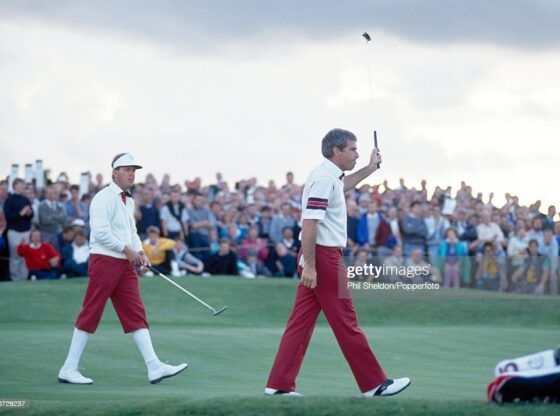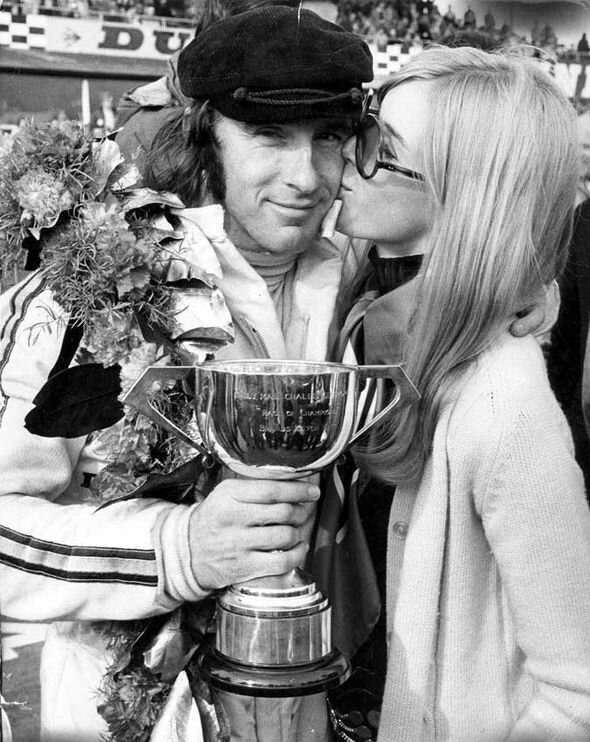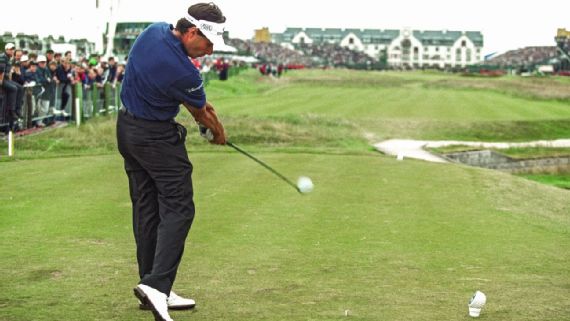Today we celebrate the birthdays of two members of the World Golf Hall of Fame.
Curtis Northrup Strange lived for golf because his father died from it. Tom Strange was a club pro who owned White Sands Country Club in Virginia Beach. In 1970, he died of cancer, many believe caused by his habit of marking his ball on the greens and popping the ball into his mouth, then wiping it with a handkerchief before putting. It was before the public was aware of carcinogens in herbicides. Curtis was 14, and he filled the void with golf.
Born in Norfolk, Virginia, on this date in 1955, Strange began playing golf at seven. He attended Princess Anne High School, alma mater of music producer Pharrell Williams and PGA Tour Commissioner Tim Finchem, where he and his twin brother, Allan, led the Cavaliers to back-to-back state golf titles in 1971 and 1972. Strange accepted a scholarship to Wake Forest and was a member of what many consider the best college golf team of all time, as four members of that squad–including brother Allan–went on to play on the PGA Tour. “Brutus” was a three-time All-American at Wake. In 1974, he eagled the final hole at the NCAA Championships to win the team and individual titles, a feat he considers the proudest moment of his career. The following year, Jay Haas—a Wake Forest teammate and future winner of 34 pro events—took the NCAA individual title.
Strange joined the PGA Tour in 1976. Three years later, he won his first event with a one-shot victory over Billy Kratzert at the 1979 Pensacola Open. He won three tournaments in 1985 to claim his first of three career money titles. After shooting 62 to set the course record at St. Andrews [Daily Dose, 11/16/16] during the 1987 Dunhill Cup, Strange had his finest season the following year. He won twice in May 1988, beating Nick Faldo in a playoff to win the U.S. Open at The Country Club [in Brookline, Massachusetts, near Boston]], then birdied the second playoff hole to beat Tom Kite in the season-ending Nabisco Championship. Strange claimed his third money title in four years and was named 1988 Player of the Year. The following year, he successfully defended his U.S Open title, winning by one shot at Oak Hill Country Club in Rochester, New York. In 1990, Strange attempted to become the first player to win three straight U.S Opens since Willie Anderson accomplished the feat 85 years earlier. After starting the final round just two shots off the lead, he shot 75 to finish in 21st place. Burned out from the rigors of competition, Strange never won another tournament.
Nobody hated a bogey more than Curtis Strange. “Bad shots should cause you all sorts of pain.” The consummate grinder, he won 29 tournaments, including 17 on the PGA Tour and, in 1988, became the first tour player to win more than a million dollars in official prize money in one season. Strange and Ben Hogan [Daily Dose, 8/13/15] are the only players to win back-to-back U.S. Opens since Ralph Guldahl did it in 1937-38. He played on five Ryder Cup teams and served as captain for the U.S. squad in 2002. In the singles matches on the final day at the 1989 Ryder Cup, Strange birdied the last four holes to earn the final point and a victory for the American team. “I’ve always looked at pressure as the time to show off,” said Strange, who spent over 200 weeks ranked at the number one player in the world. Mr. Strange was inducted into the World Golf Hall of Fame in 2007.
William Payne Stewart was also the son of a golf pro. Born in Springfield, Missouri, on this date in 1957, Payne was taught to play golf at the tender age of four by his father, Bill, who played in the 1955 U.S. Open. Stewart attended Greenwood Laboratory School, located on the campus of Missouri State University, where he competed in basketball, football and golf for the Blue Jays. In 1975, he accepted a golf scholarship to Southern Methodist University and led the Mustangs to the Southwest Conference title as a senior. With a stylish, fluid swing and spotty putter, Stewart failed to earn his Tour card and went to play on the Asian Tour, where he won twice in 1981. After qualifying for the PGA Tour in 1982, he won his first tournament at the Quad Cities Open later that year. Bill Stewart was in attendance. It was the only time he saw his son win on Tour.
In 1987, Stewart shot 20-under-par to win the Bay Hill Classic—Arnie’s tournament in Orlando—by three shots. Afterward, he donated his entire $ 108,000 first-place check to an Orlando hospital in memory of his father, who had died two years earlier. Stewart captured his first major at the 1989 PGA Championship and went on to win the season’s Byron Nelson [Daily Dose, 2/4/16] Award for lowest scoring average on tour. He beat Scott Simpson in a playoff at the Olympic Club in San Francisco to win the 1991 U.S. Open and claim his second major championship. After earning his tenth career tour win at Pebble Beach in February 1999, Stewart outdueled Phil Mickelson in an epic match at Pinehurst to claim the 1999 U.S. Open in June. At the Ryder Cup [Daily Dose, 9/26/16] in September, Stewart led the charge as the Americans came roaring back on the final day to win one of the most dramatic Ryder Cups in the history of the event.
Payne Stewart wore golf’s first throwback uniforms. Wearing plus-fours, knickerbockers, and ivy caps, his was the biggest wardrobe on Tour. “My father always said the easiest way to set yourself apart in a crowd is the way you dress,” Stewart said. His swing was graceful and his look distinctive, making Stewart one of the most recognizable and popular players in golf. He won 25 professional tournaments, including three majors and 11 PGA tour victories, and had over $ 12 million in career earnings.
On October 25, 1999, four months after his U.S. Open victory and one month after playing on his fifth Ryder Cup team, Stewart was on a Learjet flying from his home in Orlando, Florida, to Houston to play in the season-ending Tour Championship. While in route to Dallas to discuss building a new home-course for the SMU golf program, the aircraft suffered a fatal loss in cabin pressure, killing all six people aboard. The plane, which was on autopilot, eventually ran out of fuel and crashed, near Aberdeen, South Dakota.
A year after his death, the PGA Tour established the Payne Stewart Award for the player who best demonstrates respect for the traditions of the game, commitment to charity, and professional conduct. Mr. Stewart was elected to the World Golf Hall of Fame in 2001 and was posthumously awarded the 2014 Bob Jones Award—the highest honor given by the USGA—in recognition of distinguished sportsmanship in golf.









